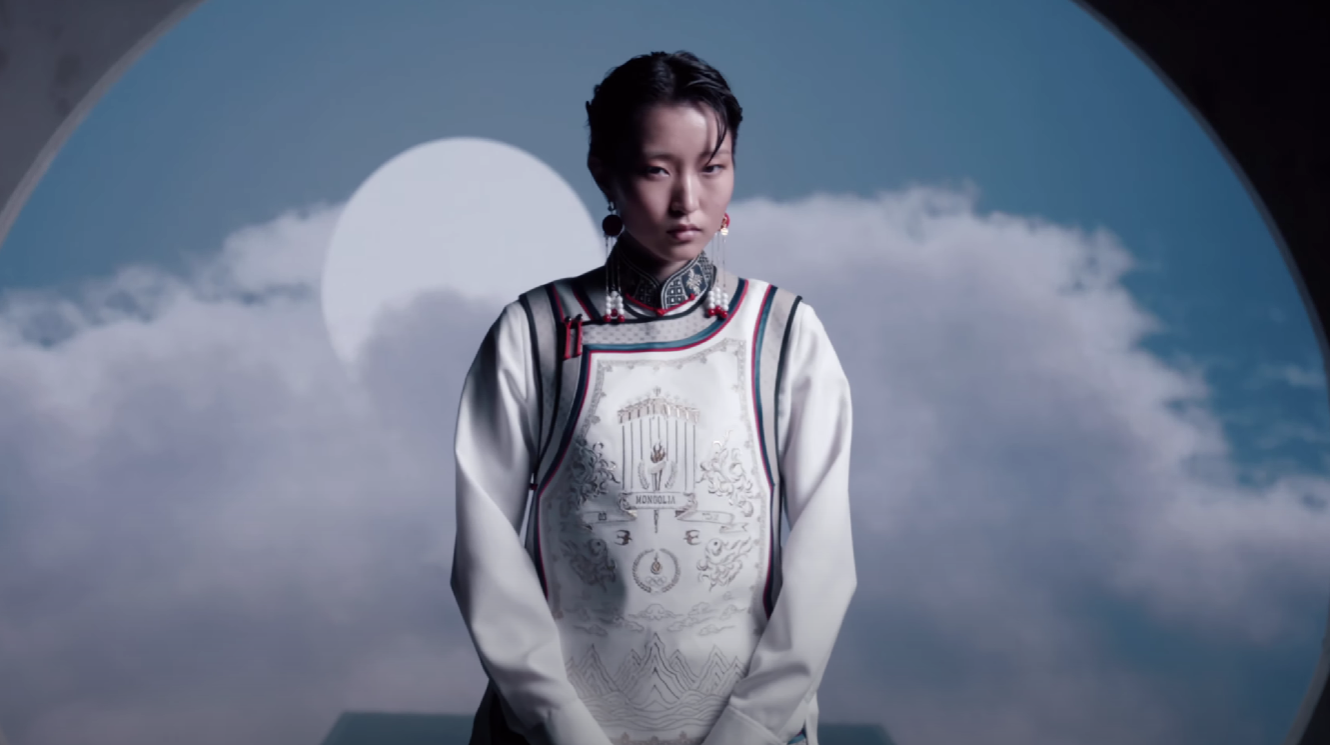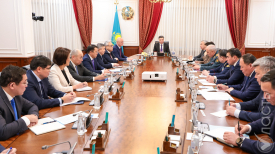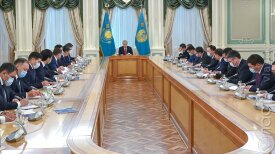This article was written by Nurbek Bekmurzaev for Global Voices. An edited version is published here under a media partnership agreement.
Читайте этот материал на русском.
On July 3, Mongolian fashion label Michel&Amazonka unveiled ceremonial Olympic uniforms, which will be worn by Mongolian athletes at the opening and closing ceremonies of the 2024 Summer Olympics in Paris. There are four sets of uniforms, two for men and women athletes and two for men and women flag bearers.
Here is a YouTube video with Mongolia's ceremonial Olympic uniforms.
All of them are inspired by the traditional piece of Mongolian clothing called deel, an ankle-long asymmetrical robe with long sleeves. The vests, which serve as the centerpiece of the outfits, feature a blend of national and Olympic symbols, including the Gua Maral (mystical deer), Nine White Banners, and the Olympic torch.
Here are Instagram posts with women and men flag bearers’ uniforms.
Since their release, the uniforms have gone viral online, drawing praise from people worldwide. Judging by the reactions of people on the internet, bloggers, and fashion-oriented media, Mongolia has already won the upcoming Olympics when it comes to creating the most beautiful uniforms. For example, the popular US fashion magazine Vogue placed the Mongolian uniforms on the top of its best Olympic uniforms list. This overwhelming positive feedback from different parts of the world has turned the uniforms into one of the most talked-about topics in the lead-up to the Olympics.
Standing behind these uniforms and basking in glory of its sensational creations is the relatively new and unknown Mongolian fashion label started by two sisters, Yanjindulam (Michel) and Nyamkhand (Amazonka) Choigaalaa, in 2015. The label is known for adding a modern touch to traditional Mongolian clothes, an approach evident in the uniforms, which “express the essence of Mongolian tradition and culture in the contemporary light.”
Previously, the label designed and produced Mongolia’s Olympic uniforms for the 2020 Tokyo Summer Olympics and 2022 Beijing Winter Olympics. The uniforms worn in Tokyo Olympics also received praise, but on a much smaller scale and only after foreign audiences saw them at the opening ceremony.
In stark contrast to unanimous praise from abroad, the initial domestic reactions to the Olympic uniforms have been mostly negative. Mongolians criticized Michel&Amazonka for a lack of creativity and blamed the label for replicating the Manchu clothing of Manchu people, an ethnic minority from China. The criticism was so overwhelming that the label reacted to it with a video in which one of the founders even cried in response to the hate from the public.
Here is a post on Facebook criticizing the uniforms’ resemblance to the traditional clothing of Manchu people in China.
Explanations for the criticism lie in the country’s history. In 1691, Mongolia came under the control of the Manchu-led Qing Dynasty and remained subjugated to Chinese rule for more than 200 years until declaring independence in 1911. This lengthy imperial rule exploited Mongolia’s natural resources, tried to assimilate the local population into Chinese culture, and crushed attempts to regain independence. Thus, elements of Mongolian culture that bear resemblance to Manchu culture, such as the Olympic uniforms, serve as a trigger for Mongolians by reminding of the imperial legacy and tragic period in their history.
Growing international praise is consoling Michel&Amazonka and may help Mongolians to separate the uniforms from the traumatic historical legacies and enjoy their beauty that has brought admiration and interest to their country.
Поддержите журналистику, которой доверяют.








